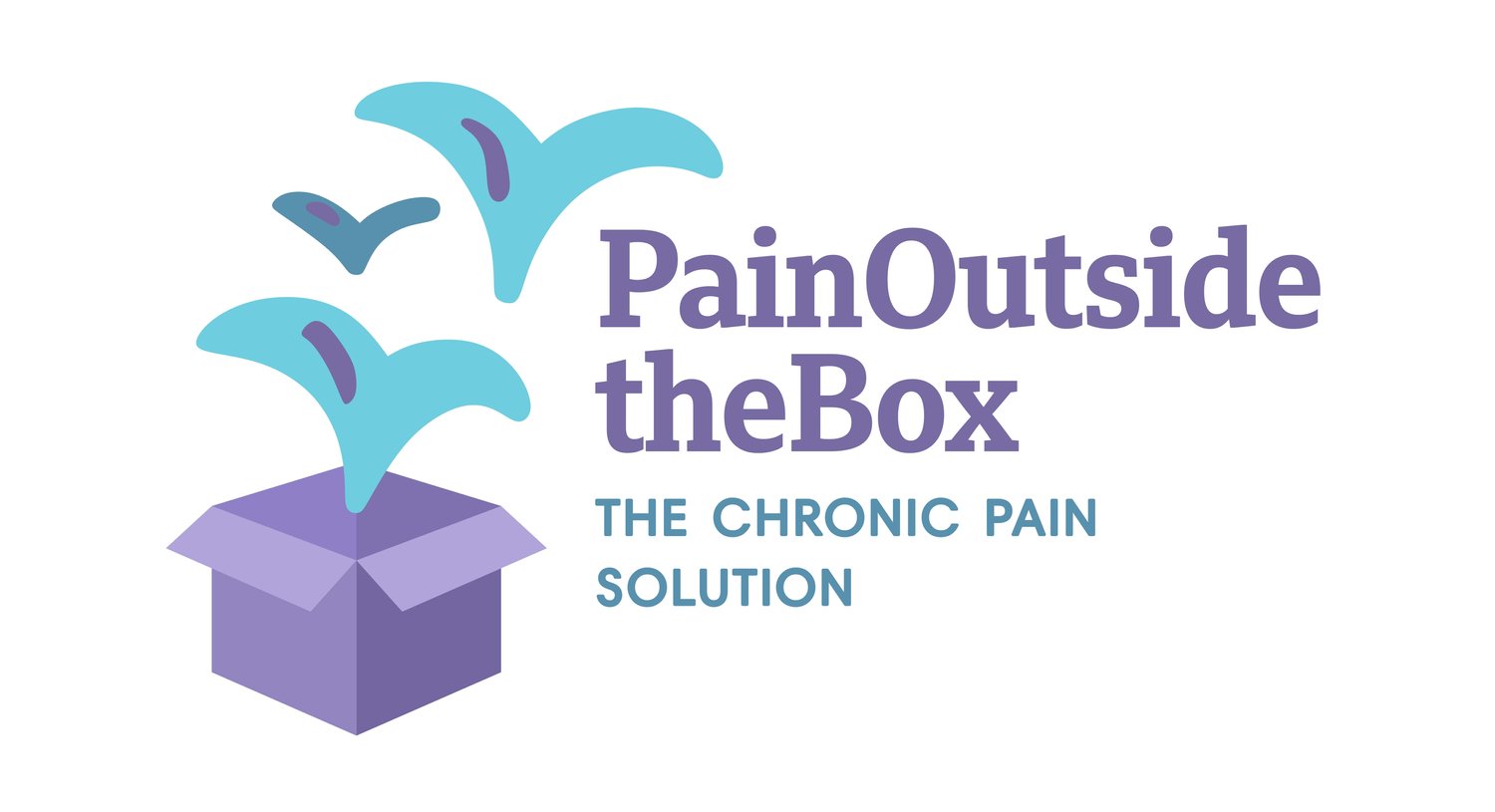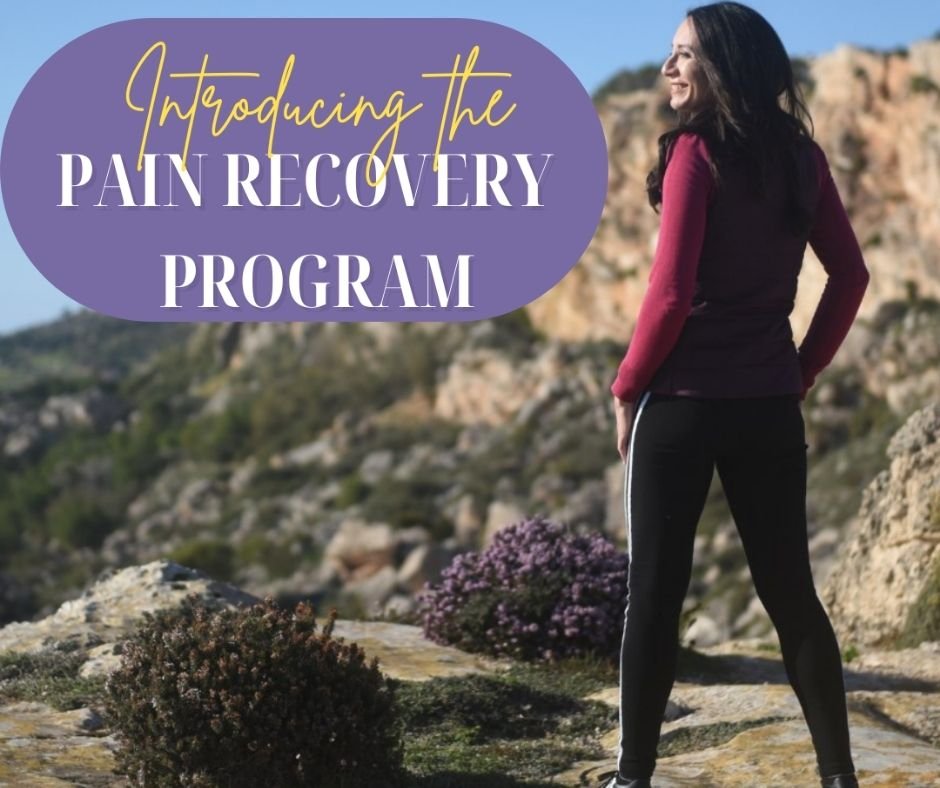How to Exercise with Chronic Pain (and why resuming physical activity is a good idea!)
Do you avoid certain movements or activities due to chronic pain?
Have you reduced the number of activities you can engage in over the years?
If yes, then you may be playing it too safe and unknowingly perpetuating your pain.
I know, you may be raising an eyebrow right now. But don’t worry, it isn’t your fault. Nobody taught you that pain avoidance can eventually lead to strengthened pain pathways, and that your well-intentioned behaviour was only making things worse.
In this article, I’m going to explain how you could finally take action to step out of a shrunken comfort zone and free yourself of most (if not all) of your physical limitations.
Pain is a danger signal. But with chronic pain, the signal goes a bit haywire…
The first thing to understand is that any kind of pain is a danger signal.
Through communication between our nerves, spinal cord and brain, pain alerts us to activities or sources that may cause harm to our body, such as an intense source of heat, or the fact that we’ve just sprained or injured an ankle.
This mechanism works very well to stop us from engaging in potentially harmful activities, such as continuing to run when we’ve just injured an ankle. Thanks to pain, we realize that we may need to take a rest or seek medical attention.
But unfortunately, chronic pain is a rather faulty brain signal. It’s a case of the brain thinking that we are still in danger, when really, we’re not.
There are several reasons why this happens. It could have to do with a terrible experience with an injury, which causes us to wonder if our body has really and truly healed. This kind of fear and mistrust in our body is sometimes enough to trigger the ‘danger’ signal, in the form of pain each time we approach an activity involving the affected part of the body.
There is also the emotional side to pain. When we are in significant distress, we may get pain as a way for our body to alert us to this emotional danger. This is because “pain and emotion circuits overlap in the brain” (See Arthritis Foundation).
In other words, sometimes the brain is unable to distinguish between emotional pain and physical pain, and therefore sends out the same kind of ‘danger signal’ when we’re going through chronic emotional distress.
Why Pain Avoidance may Shrink our Comfort Zone
When we avoid physical activity, exercise or specific movements due to the fear of making our symptoms worse, we are strengthening the ‘signal’ that engaging in such an activity is indeed a threat.
For this reason, the brain learns to interpret similar activities as threatening and keeps firing the pain signal whenever we engage in them. But unless there is still an injury present, there is no real threat. As the months go by, we shrink our comfort zone because of our intention to play it safe and protect our body.
In the case of chronic pain, the body itself may not need this kind of physical protection. Very often, patients find that the pain area is not really damaged or injured. MRIs may come out clear, and any abnormalities identified may not correlate with the pain levels one experiences.
Such a situation causes confusion as sufferers wonder why it hurts so much to move. Today, the answers are emerging.
Chronic pain is often neuroplastic, which means it originates in the brain. This is why physically-focused treatments that attempt to address the symptoms in isolation often fail to work. It’s like putting a cast onto a severely broken leg without actually fixing the broken leg first!
The ‘cure’ therefore lies in the brain, and in changing those habits and beliefs that are actually reinforcing pain.
Watch this video for a more detailed explanation on how to exercise for chronic pain.
So how do you resume physical activity when your pain levels are intense?
Thanks to our brain’s neuroplasticity, we can rewire our brain to stop sending out unnecessary pain signals. However, the correct habits and mindset are key to this process.
If we still have reason to believe that there is danger, then the danger signal is more likely to fire. For this reason, we need to work on lowering fear levels first, and on increasing our trust that our bodies can move with less pain.
It is this kind of mindset shift that we need to aim for, so that we can start sending a different message to our brain: that physical activity is indeed safe and beneficial for us.
Brain rewiring for chronic pain works best by starting to challenge our limitations at a slow pace, to give the brain time to adjust to the idea that our increased movements are perfectly safe.
Of course, if one has been inactive for a long time, then there may be other physical processes involved, which yet again stresses the importance of taking it slow so that the muscles will not be overworked.
Finding the Right Challenge Level
In my opinion, rewiring the brain to generate less pain during or after physical activity involves finding the right challenge level, so that the activity one resumes doesn’t feel too scary and overwhelming.
Anything that triggers the fear response is likely to increase pain levels. And this is why we start small.
My suggestion is to start with something that you’ve been avoiding due to pain, but which doesn’t feel too overwhelming for you when you think about the prospect of resuming it.
It could be a simple house chore, a walk around the blog, or a 10 meter jog - it all depends on where you’re at right now and what your current comfort zone is.
Once you train yourself to believe and trust that this activity is safe, and you don’t experience a flare-up after engaging in it, you can continue to expand and lengthen the duration or intensity of the activity.
If the activity causes too much pain, then it could be that you were not in the right mindset to approach it. Watch out for dread, trepidation and increased tension in the body before and during the activity - these are indications that you are approaching it with too much fear and that you haven’t found your right challenge level.
If you’re unable to calm down this fear, then you may need to start with a lower-intensity activity that you can do with more curiosity, and perhaps even a sense of fun!
Don’t expect the process to be pain-free!
I must conclude by warning you that there will be challenges during this process. There is likely to be some pain as you engage in something that you’ve been avoiding for ages; think of this as your brain getting into a bit of a panic. After all, it’s not used to this kind of exposure!
The way we respond to pain as it arises is key to the brain rewiring process, and is a separate topic on its own which I tackle elsewhere. Essentially, for now it’s enough to remember that responding with fear, frustration or helplessness is likely to wire the brain for more pain and set you back.
The important thing as you resume a physical activity is that you can tolerate any pain that arises and that you can repeat the same activity the next day without too much dread or anguish (if you cannot, then drop the activity for now!). Repetition is key to brain rewiring - it is not enough to ‘try’ expanding your limits just once or twice a week!
At the end of the day, only you can find the right challenge level for yourself. What others propose may be too much, or too little. You need to do your own brainstorming, and think of how you could break your current limitations without risking overwhelm.
And then, once you have your idea, attempt, trust, evaluate and repeat!
Need more help on your Chronic Pain Recovery journey?
I offer a comprehensive Online Pain Recovery Program that will educate you and guide you through the process in a more structured manner.
If you’re open to exploring the links between your symptoms and your emotional state, and on addressing your chronic issues from a mindbody perspective, then the Pain Free Breakthrough Program is for you!
A 30-day money back guarantee is offered in case you do not find it beneficial (only about 2% of customers actually make use of this guarantee!)



